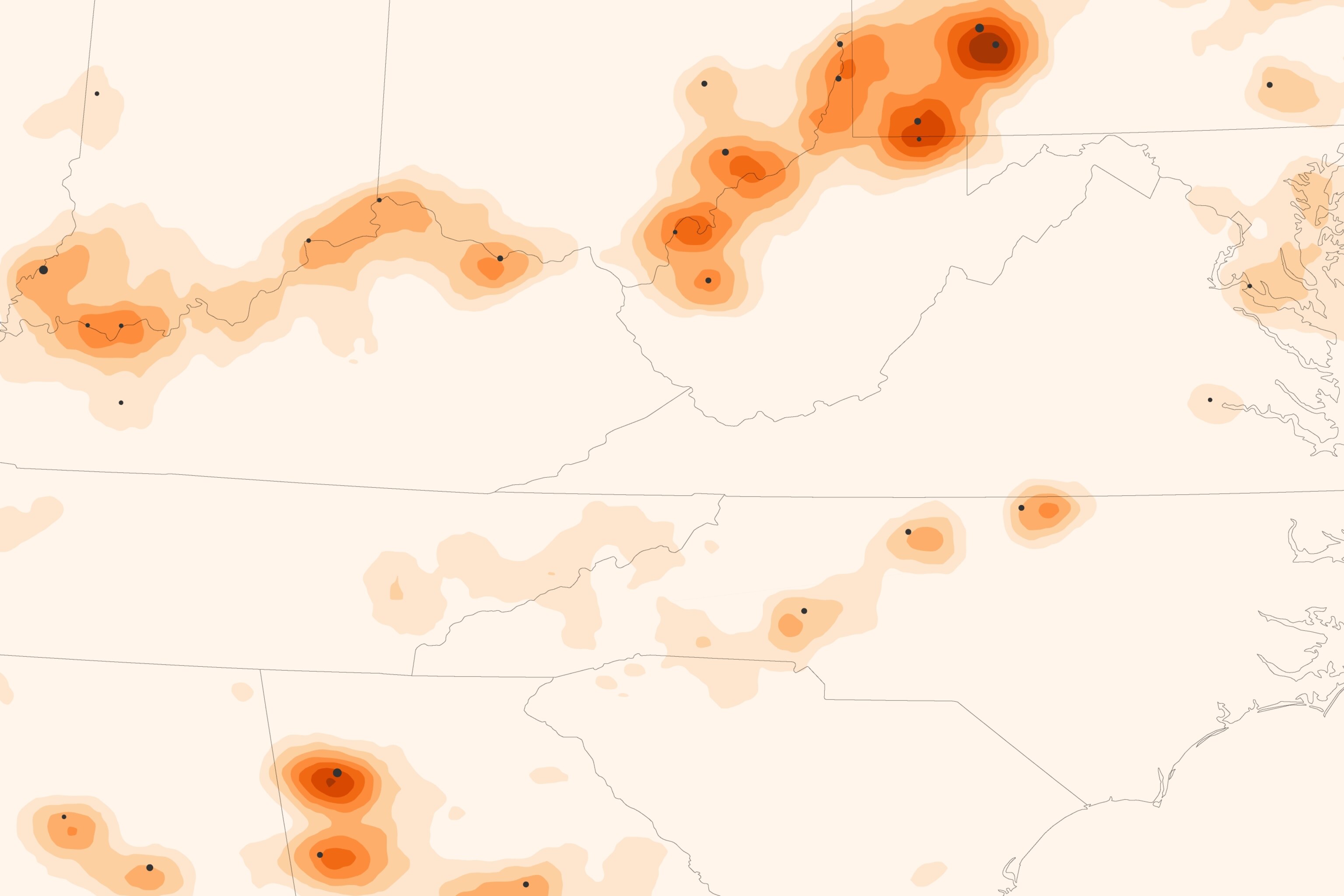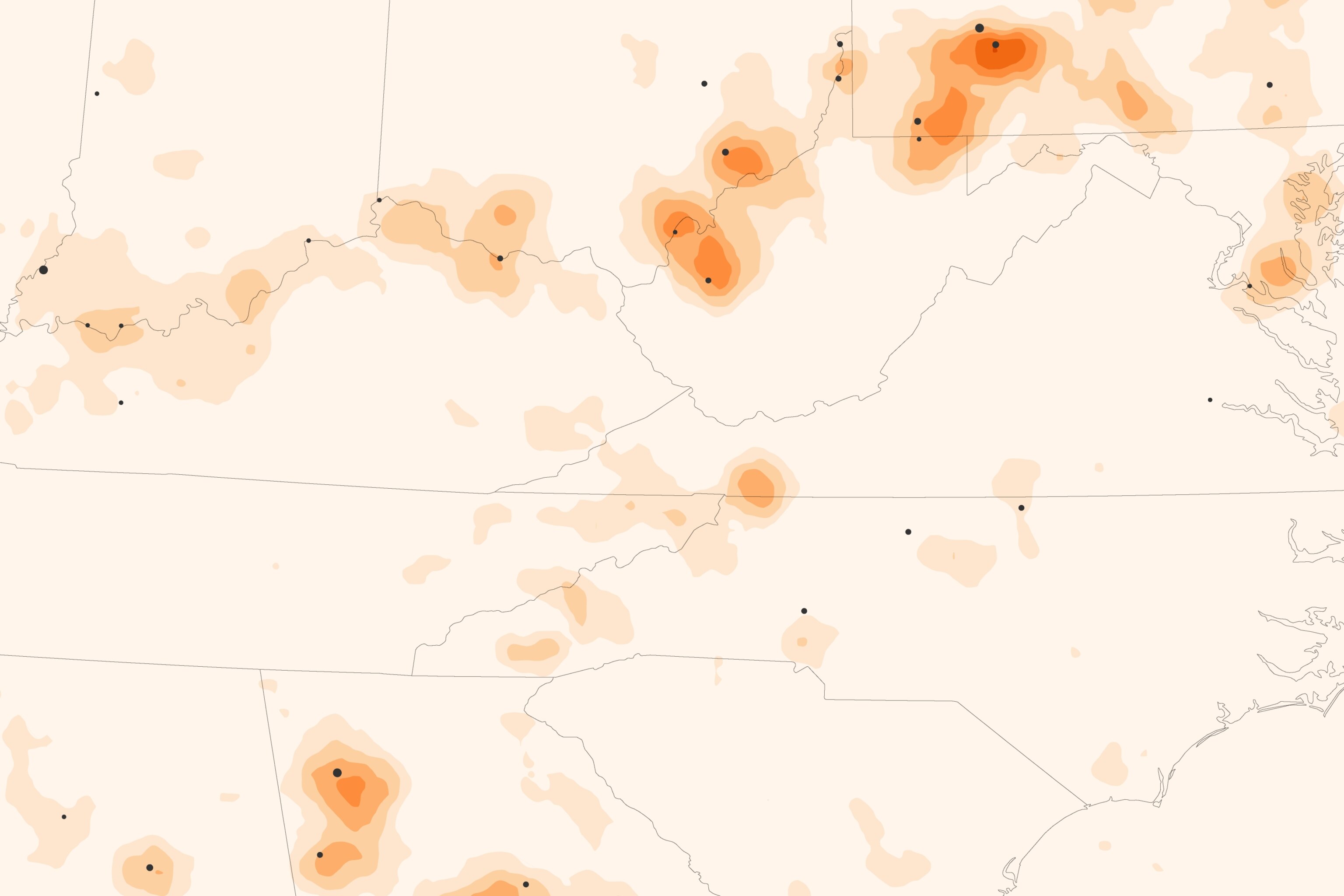
Satellite Confirms Decline in U.S. Coal Pollution
There’s some rare good news on the energy pollution front, confirmed by groundbreaking new use of satellite imagery.
Emissions of sulfur dioxide, the acid rain precursor that ravages respiratory health, have fallen in half since 2005 over what has been one of the most coal-heavy areas of the eastern United States, reported scientists using the Ozone Monitoring Instrument (OMI) on NASA’s Aura satellite. See if you can see the change in just past six years–the fade in orange coloring–on these before (top) and after satellite images. The black dots represent power plants and their relative size (click on the images to enlarge):

Here’s NASA’s report on the findings. This trend, in the Appalachian Mountain states of West Virginia, Ohio and Pennsylvania, is bound to grow stronger due to one of the developments we count as one of the top ten energy news stories of 2011–utilities’ announcing plans to close old coal-fired power plants.
But the scientists attribute this already-visible cut in SO2 concentrations to the U.S. Environmental Protection Agency’ Clean Air Interstate Rule of 2005. The regulation capped emissions but left it up to power companies to determine how to reduce them, so in response, many power plants installed desulfurization devices and took other steps to limit the release of SO2. The EPA finalized new rules to address coal power plant pollution that drifts across state borders earlier this year. (Even though the Obama administration has pulled back on planned smog rules, the interstate pollution regulations remain in place.)
As important as the actual findings of the team of scientists, led by Environment Canada, which confirm ground-based measurements, is that the study proves that the remote sensing technique works, and can provide subtle details. In fact, the Ozone Monitoring Instrument can detect emissions down to levels about four times lower than previously possible. And importantly, it means satellite measurements will allow scientists to monitor emissions throughout the world–including in countries that don’t have the public reporting requirements that have been allowing authorities to track the success of acid rain regulations in the United States since 1990.
As we reported earlier this year, one of the side-effects of the flattening of coal demand in the United States is the industry’s search for new markets overseas, particularly in China and India.
And it’s important to note that globally, fossil fuel emissions continue their inexorable climb. The World Meteorologic Organization announced last week the disturbing news that despite the calls of groups like 350.org to reverse the trend, carbon dioxide emissions rose by 2.3 points in 2010 to 389 parts per million, a 40 percent increase since the industrial revolution began.